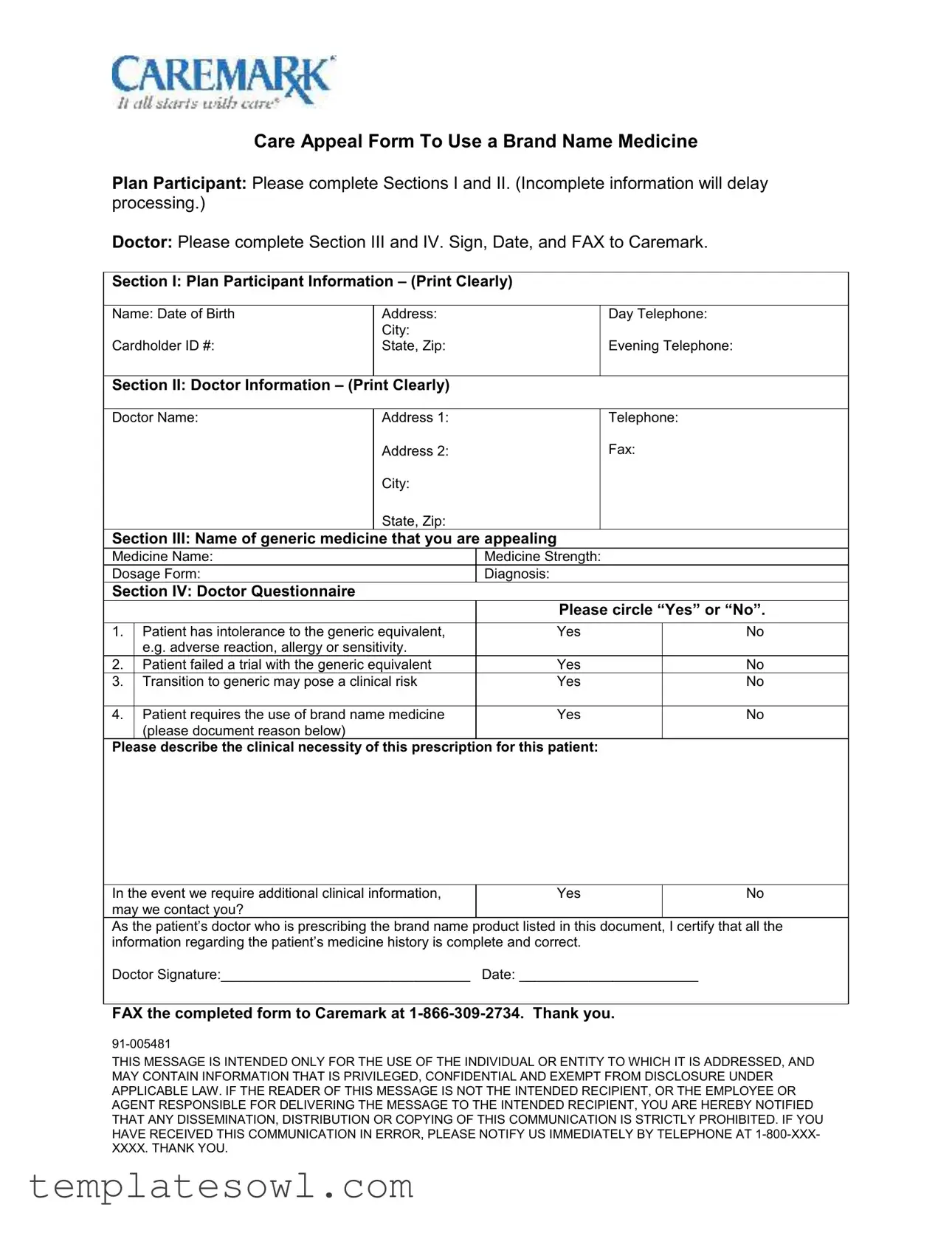Filling out the Caremark Appeal form can be a straightforward process—if done correctly. However, many individuals make common mistakes that can lead to confusion and delays in processing their appeals. Here are ten of those mistakes to avoid.
One major mistake is not reading the instructions carefully. Each section of the form has specific guidelines that must be followed for the appeal to be valid. Ignoring these instructions may lead to incomplete information and potential rejection of the appeal.
Another frequent error is providing insufficient documentation. While individuals may think their explanation is enough, it’s crucial to include all relevant medical records, invoices, and any supportive statements from healthcare providers. Documentation can be the deciding factor in whether an appeal is approved or denied.
Many people fail to check the deadlines. Appeals typically have strict timelines. Missing a deadline can mean losing the right to appeal entirely. Keeping a careful eye on these dates is essential to ensure the appeal is submitted on time.
Providing inaccurate or outdated personal information is another common mistake. This can include misspelled names, incorrect addresses, or wrong policy numbers. Double-checking this information can prevent unnecessary complications down the line.
Individuals often neglect to sign the form. An unsigned form can be considered invalid. It’s a simple yet serious oversight that can jeopardize an otherwise well-prepared appeal.
Some people underestimate the importance of clarity in their explanations. When stating the reason for the appeal, being vague may lead to misunderstandings. Using clear and concise language is vital for the reviewers to grasp the specific points of the case.
Failing to follow the required format is also a common issue. Whether it’s font size, spacing, or using the correct form version, these details matter. Not adhering to the format can result in the appeal being disregarded or delayed.
Many forget to keep copies of everything submitted. Having a personal record can be a lifesaver if anything goes wrong or if follow-up information is needed later. It helps track the progress of the appeal and reference the original submission.
Overlooking support from others can hinder an appeal. Seeking help from a lawyer or a knowledgeable individual can provide guidance and reinforce arguments. Understanding the process can significantly improve the chances of a successful appeal.
Lastly, impatience can lead to frustration. After submitting an appeal, some people expect immediate results. It’s important to remember that reviews take time. Being patient and checking in at appropriate intervals can ease anxiety while waiting for a response.
By avoiding these ten mistakes, individuals can improve their experience with the Caremark Appeal process. Being thorough and attentive can make a significant difference in achieving a favorable outcome.

